Rose Blue perfume (Blue parfum)
A group of blue roses attracts the sympathy of a large number of flower growers. This is not surprising, because all of its representatives look very mysterious and are the personification of cold, but at the same time delicate beauty. Blue perfume grade fully meets the listed statements. Especially true aesthetes will like it.
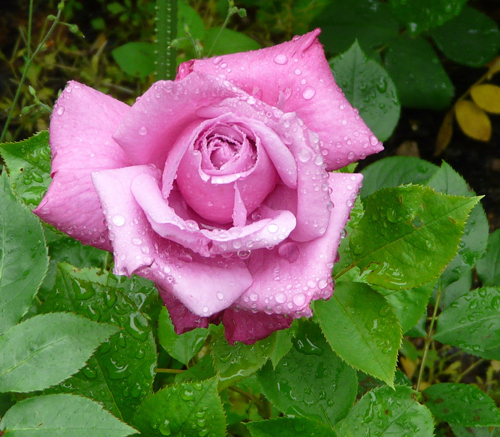
History of appearance
The variety was obtained by breeders of the German nursery Tantau in 1977. It is a hybrid tea variety, but according to the nature of flowering, some experts classify it as a floribunda. Other names of the culture are also known: TANfifum, Violette Parfum, TANtifum, Blue Perfume, TANifume.
Description of the variety
Blue parfum is an ornamental flowering shrub that is dense and compact. It belongs to low-growing plants, since it does not exceed 0.7 meters in height, expanding in breadth by the same distance. The perennial shoots are prone to branching, the leaves are painted in a rich dark green and serve as a delightful contrasting background for the raspberry-lavender flowers. It is worth noting that the elongated rosebuds initially have a purple hue, acquiring the tone sounded above in the future, as they bloom. At the same time, the crimson color is characteristic only of the outer petals, while the inner ones, which make up the middle of the flower, remain lavender-lilac. In the phase of full disclosure, the flower exposes its core. Its size ranges from 9 to 12 cm. Some petals are wavy at the edges. Each stem forms 1-3 elegant buds. The lush blossoms exude a strong heady aroma reminiscent of a mixture of cloves, lily of the valley and violets with light spicy notes of cinnamon and vanilla. The combination of intense color of delicate flowers and a pleasant, dizzy fragrance leaves an indelible impression on the Blue perfume variety and arouses in the heart a passionate desire to make this magnificent rose the central figure of your flower garden.
German breeders have tried their best: this variety of blue roses has good disease resistance, medium - to rain. In addition, the culture tolerates temperatures as low as -25 ° C without a special shelter. Under the midday summer sun, the color of lilac inflorescences may fade slightly, but this only improves their appearance, increasing the heterogeneity of the shade and making the petals even more spectacular. The flowering of the variety is abundant. It begins in the month of June and lasts until mid-autumn.
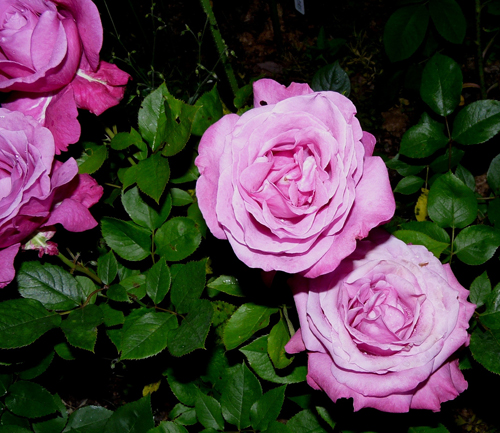
Growing and care
Our heroine needs plenty of sunlight. It is preferable to place Blue parfum on the southeast side of the site, then the sun will illuminate the ornamental shrub throughout the first half of the day, when it is not too hot in summer. You should not plant a crop near other large plants - shrubs and especially trees, as this will prevent normal air circulation around the perennial and, as a result, will cause frequent attacks of pests and the appearance of diseases. When choosing a location, also pay attention to the depth of the groundwater: the more impressive it is, the better for the rose.
It is advisable to plant the plant in a light, loamy soil. But in the absence of such, use ordinary leaf or garden soil, saturating it with nutrients in advance by introducing humus and peat. Heavy soil is improved by adding sand and compost. The hybrid needs a slightly acidic environment, therefore, soils with an increased acidity level are fertilized with ash.
Perennial Blue perfume does not require any special care. It needs to be watered regularly, fed, loosened under the bush, the soil, planned twice a year and, as necessary, sanitary pruning. For watering roses, use only settled water at room temperature, and the procedure itself is performed in the evening or morning hours. A day after this event, they begin to loosen the soil under the flower and mulch it with a mixture of manure, sawdust and decayed foliage.The plant needs feeding in spring and during the summer season, especially at the stage of bud formation on culture and during flowering. In the first case, organic matter is used, in the second - mineral complexes rich in potassium, phosphorus and trace elements.
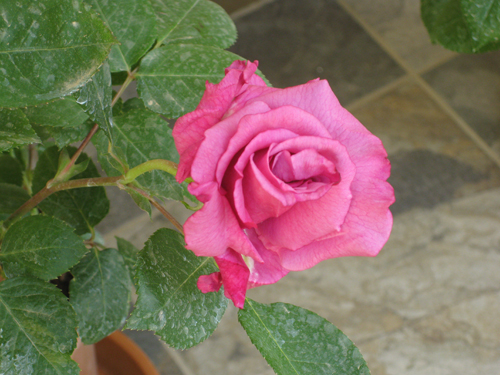
To protect against insect pests and fungal diseases, marigolds should be planted in the vicinity of the rose. These plants secrete substances that prevent these troubles. In addition, prophylactic treatment of the culture with solutions of fungicides and insecticides may be required. When growing a fragrant owner of lavender inflorescences in a region with a temperate climate, the flower does not need to be covered for the winter. Severe winters are forced to use a special insulation to protect the plant from the cold. But, one way or another, the bush must first be covered with dry earth or peat, and all its shoots must be shortened, removing completely diseased, dry and damaged ones.
Use cases
The Blue perfume variety is quite worthy to show off in the foreground of the site or in single plantings against the background of a grassy lawn. If we talk about the combination of a fragrant rose with other plants, then undersized conifers (juniper, thuja, spruce, boxwood), Mexican ageratum, sea clissum, clematis, phlox, holly mahonia, horizontal cotoneaster, evergreen santolina are ideal for the role of companions for a bright beauty. An ideal neighbor for our heroine will be narrow-leaved lavender, suitable for her due to both the shade of the inflorescences and the silvery foliage. Blue parfum is used in the design of borders, flower beds, rose gardens.
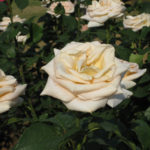

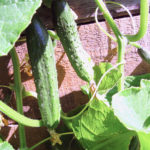
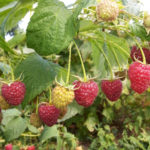

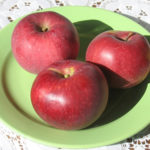



The rose captivates with its color, a full glass of the correct shape and aroma, but there are difficulties in leaving. To get the declared shade of the petals, you need a bright sun, watering - only under the bush, the petals are too delicate to withstand the automation. Requires regular feeding. Suffers from powdery mildew in humid summers - plus one fugnicide treatment. Due to its unusual color, it is difficult to fit into an existing rose garden. Set aside for yews as an accent against the background of needles.